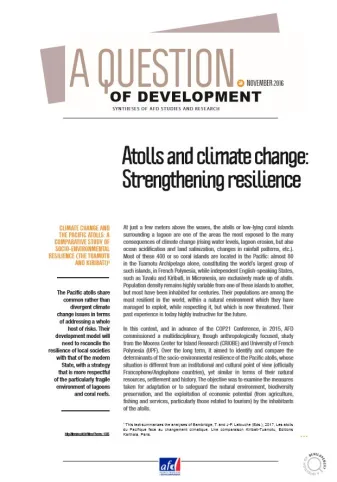Share the page
Atolls and climate change: Strengthening resilience
Published on

At just a few meters above the waves, the atolls or low-lying coral islands surrounding a lagoon are one of the areas the most exposed to the many consequences of climate change (rising water levels, lagoon erosion, but also ocean acidification and land salinization, changes in rainfall patterns, etc.). Most of these 400 or so coral islands are located in the Pacific: almost 80 in the Tuamotu Archipelago alone, constituting the world‘s largest group of such islands, in French Polynesia, while independent English-speaking States, such as Tuvalu and Kiribati, in Micronesia, are exclusively made up of atolls. Population density remains highly variable from one of these islands to another, but most have been inhabited for centuries. Their populations are among the most resilient in the world, within a natural environment which they have managed to exploit, while respecting it, but which is now threatened. Their past experience is today highly instructive for the future.
Useful Information
-
Authors
-
François Gaulme
-
Edition
-
33
-
Number of pages
-
4
-
ISSN
-
2271-7404
-
Collection
-
A Question of Development
-
Other languages
